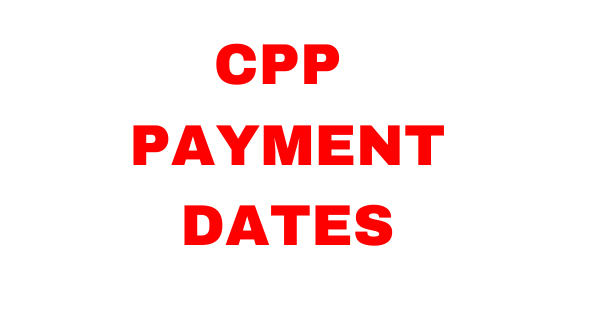Class 9th Computer Unit 2 Notes | Federal board
As the digital landscape continuously reshapes the world, the inclusion of computational thinking within the educational curriculum emerges as a crucial skill set for the young minds of today.
The recently examined 9th grade computer science curriculum, specifically Unit 2 on Computational Thinking & Algorithms, showcases an adept integration of core concepts designed to not only educate but also inspire students.
Understanding Computational Thinking
At its core, computational thinking involves solving problems, designing systems, and understanding human behavior, by drawing on the concepts fundamental to computer science. The 9th-grade curriculum dissects this broad discipline into comprehensible segments, focusing initially on the dichotomy between solving simple and complex problems.
This distinction is crucial as students learn that while simple problems may require straightforward solutions, complex problems necessitate a multifaceted approach involving critical thinking, creativity, and often a trial-and-error methodology.
The curriculum then transitions into practical tools such as IPO (Input, Process, Output) charts, which are praised for their ability to delineate clear structures and foster a better understanding of software development processes.
These charts serve not only as educational tools but also as bridges to professional practices, ensuring students grasp both the theory and application of learned concepts.
Algorithms and Problem Solving
An integral part of computational thinking is algorithm design—teaching students to approach problems systematically by creating step-by-step solutions. The curriculum introduces various methods for designing solutions, such as flowcharts and concept maps, emphasizing the importance of visual aids in understanding and solving problems.
Moreover, computational thinking extends beyond the computer science class, intertwining with other subjects like mathematics and physics, thereby illustrating its interdisciplinary utility. Whether it’s optimizing solutions or enhancing problem-solving capabilities, the curriculum aims to equip students with a versatile skill set.
Applications in Real-World Scenarios
Practical applications of computational thinking are highlighted through exercises that encourage students to apply their knowledge to real-world scenarios. For instance, understanding how computational methods can aid in daily decisions or complex problem-solving situations underscores the relevance of these skills beyond the classroom.
The curriculum also includes exercises that challenge students to identify computing problems in other disciplines, thereby reinforcing the ubiquitous nature of computational strategies in various academic and real-life contexts.
Preparing for the Future
The focus on computational thinking within the 9th grade curriculum is more than just about understanding computer science; it’s about preparing students for a future where digital literacy is as fundamental as reading and writing.
By embedding these skills early in education, the curriculum not only prepares students for higher education and career challenges but also empowers them to navigate and influence a technology-driven world effectively.
conclusion
The comprehensive exploration of computational thinking and algorithms in the 9th grade curriculum serves as a foundational pillar in modern education. By fostering analytical skills, encouraging problem-solving abilities, and bridging theoretical knowledge with practical applications, the curriculum not only adheres to educational standards but also enhances student preparedness for the technological frontiers of tomorrow.
This educational journey is not just about creating the next generation of computer scientists but about shaping well-rounded, critical thinkers ready to tackle the challenges and opportunities that lie ahead.
FAQs
omputational thinking is a method of problem-solving that teaches individuals how to tackle issues systematically, much like a computer would. It involves skills such as decomposition, pattern recognition, algorithm design, and abstraction, which are crucial in various fields beyond computer science.
Computational thinking is included to help students develop critical problem-solving skills that are applicable in all disciplines. It prepares them for future academic and professional challenges in a world where digital literacy is increasingly important.
IPO charts stand for Input, Process, and Output. They are used to structure and visualize the steps involved in a software development process. These charts help improve communication, reduce errors, and facilitate the understanding of complex systems, making them a vital educational tool in learning computational thinking.
Computational thinking enhances problem-solving skills that can be applied in subjects like math and physics, where students learn to approach complex problems methodically, optimize solutions, and apply logical reasoning.
Students are encouraged to apply computational thinking to everyday decisions and problem-solving scenarios, such as calculating costs, planning events, or analyzing data. This practice helps them understand the practical relevance of their computational skills.
Yes, computational thinking equips students with the analytical and problem-solving skills necessary for many careers, particularly in science, technology, engineering, and mathematics (STEM) fields, but also in areas like economics, healthcare, and arts where systematic problem-solving is valued
Skills are typically assessed through practical exercises, projects, and tests that require students to apply their knowledge to solve problems, design algorithms, and use computational methods to find solutions.
Students may struggle with the abstract aspects of computational thinking such as algorithm design or understanding complex problem decompositions. However, with practice and proper instruction, these challenges can be overcome.
Many resources, including online tutorials, interactive games, and coding platforms, are available to help students practice and enhance their computational thinking skills. Schools may also provide extra tutoring or after-school programs focused on computer science.
By learning computational thinking, students develop a versatile set of skills that are critical in navigating and contributing to a technology-driven world. These skills enhance their ability to think critically, solve complex problems, and make informed decisions, which are valuable in any future career path.







